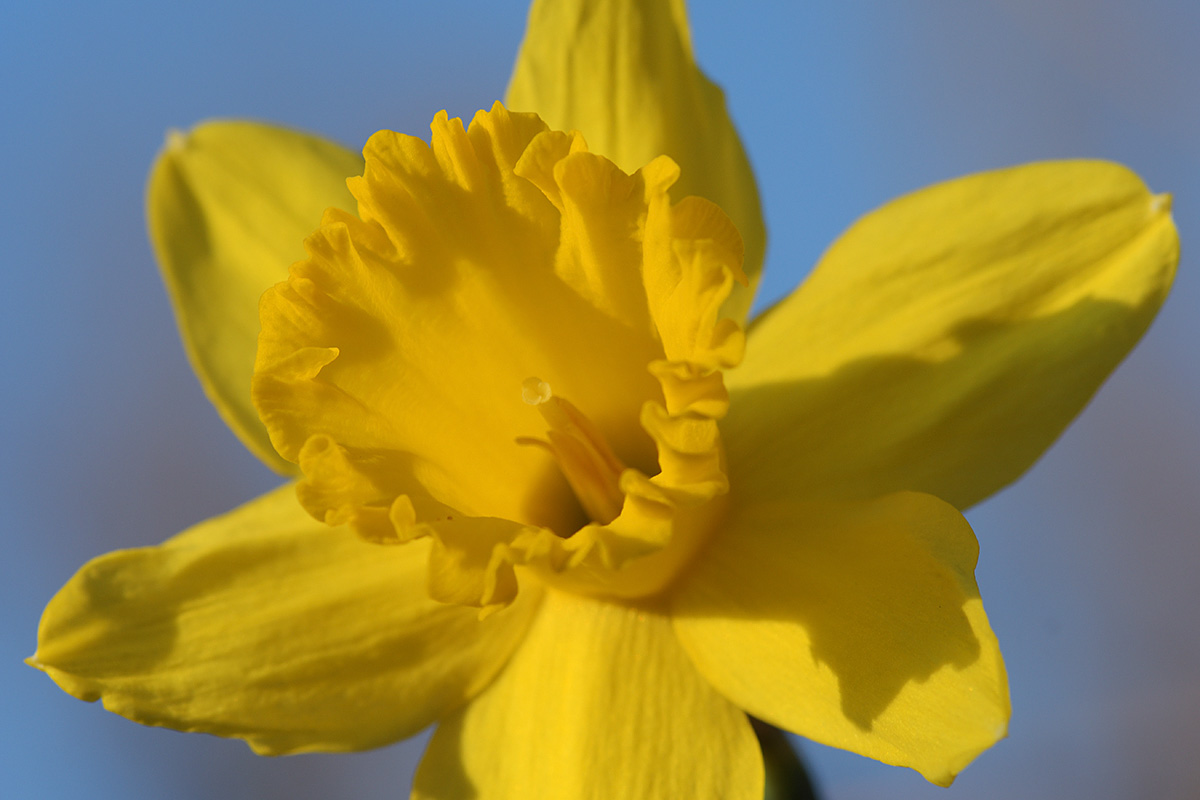Wildflowers evolved over a long time together with their specific (insect) pollinators. As a result, the pollinators are rewarded with pollen or nectar, when they visit their favored flowers.
One of the most known spring flowers is the daffodil. It may flowers as early as February and, thus, it would be desirable if it offered pollen and nectar for e.g. bumblebees. However, this is not the case. The overbred flower has almost nothing to offer to its visitors.
We humans like to breed new varieties from wildflowers, aiming for new colors or color combinations, bigger blooms and more petals. As a result of the intense breeding, the original small, wild, yellow-trumpeted daffodil flower comes now in various combinations of yellows, oranges, whites, long trumpets, short trumpets, double centers, and extra tall and dwarf sizes.
The intense manipulation of daffodils by plant breeders comes at a high cost. Most hybrids are sterile, or they produce only little pollen and nectar. The loss of pollinator-attracting features is not unique to daffodils but has happened with numerous other flowers. Hence, when you grow them in your garden nonetheless, care for a balance and also provide nectar and pollen-rich plants for early pollinators.
